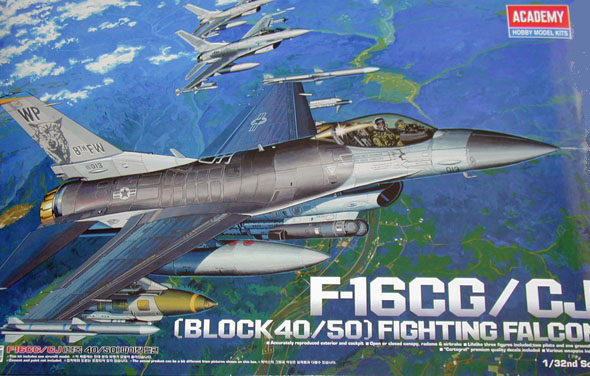
Feature Article by Geoff Coughlin
Kit Ref: 12101
Subject of this build: Option 5 in the kit: F-16CJ Block 50P 92-3901 35th Fighter Wing, Brig. Gen. William J. Rew, Misawa AB, Japan, September 2004
A little bit of background
By any standards the F-16 must rank as one of the most successful combat warplanes of modern times. Having seen action in Bosnia, Iraq and Afghanistan, the ‘Viper’ has been highly successful in the fighter, fighter-bomber and recce roles. The aircraft can carry more than thirty different types of ordnance and electronic system loads – in various combinations to a weight limit of around 10 tons! Quite astonishing considering it’s relatively small size.
F-16C/D Block 40/42
Entering service in 1988, the Block 40/42 is the improved all-day/all-weather strike variant equipped with LANTIRN pod; also unofficially designated the F-16CG/DG, the night capability gave rise to the name “Night Falcons”. This block features strengthened and lengthened undercarriage for LANTIRN pods, an improved radar, and a GPS receiver. From 2002, the Block 40/42 increased the weapon range available to the aircraft including JDAM, AGM-154 Joint Standoff Weapon (JSOW), Wind-Corrected Munitions Dispenser (WCMD) and the (Enhanced) EGBU-27 Paveway “bunker-buster”.
Also incorporated in this block was the addition of cockpit lighting systems compatible with Aviator’s Night Vision Imaging System (ANVIS) equipment. The USAF’s Time Compliance Technical Order (TCTO) that added the night vision (NVIS)-compatible systems was completed in 2004. A total of 615 Block 40/42 aircraft were delivered to 5 countries.
F-16C/D Block 50/52
The first Block 50/52 F-16 was delivered in late 1991; the aircraft are equipped with improved GPS/INS, and the aircraft can carry a further batch of advanced missiles: the AGM-88 HARM missile, JDAM, JSOW and WCMD. Block 50 aircraft are powered by theF110-GE-129 while the Block 52 jets use the F100-PW-229.
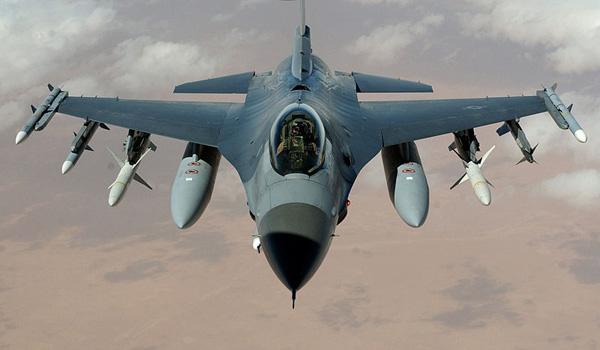
The Academy kit
Modern jets are probably my favourite modelling subjects – we all have favourites, right? Maybe it’s the opportunity to add some nice detail to the cockpit and some heavy stores, or not, I don’t know, I just do know that I love these builds, so after quite a lull (for me in covering these subjects) expect more in SMN over the coming years!
Academy do make a good model, especially in 1:32 scale and having been fortunate to build two F/A-18 Hornet kits in this larger scale also from Academy, and seen how good they were I was keen to get to grips with their F-16. I’ve built one of these before, a long time ago, but this is planned to be a very similar build but applying some of my newer-found skills.
The good thing is that I’ve managed to finish the model before going to ‘print’ and so I’m able to show you up-front a couple of images of my completed F-16CJ Block 50P Viper.
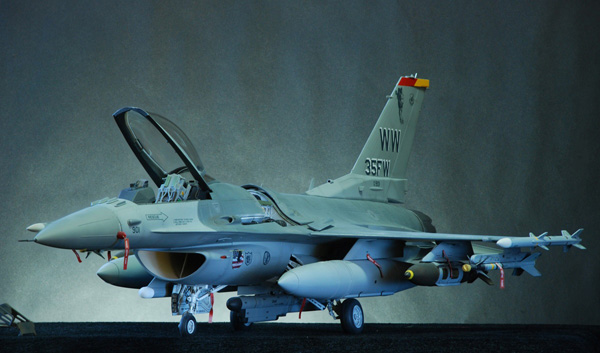
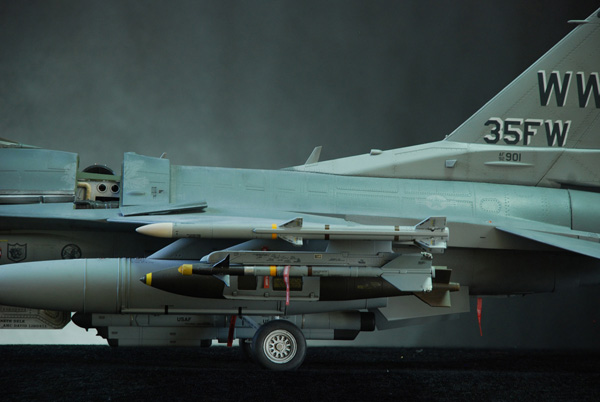
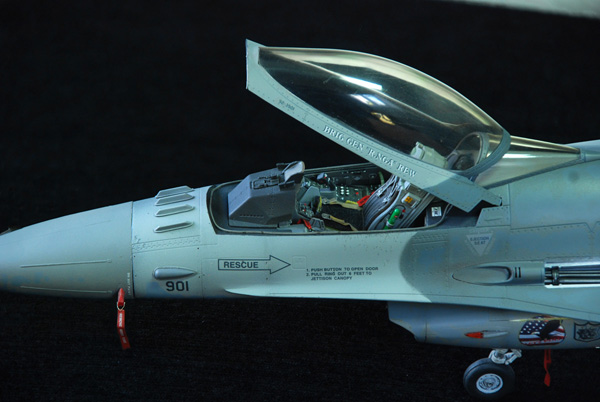
I guess over the years there have been many comparisons between this Academy kit and the more expensive one produced by Tamiya – I’ve built both and for me, looking at the whole package on offer the Academy kit offers more for your buck. At the time of writing the Academy kit isn’t currently available but you can still get it from various internet sources and on the second-hand market so it’s worth looking out for sure. If you’re on a budget, then go for the Academy kit – it has everything in terms of detail and weapons options. If you really want a detailed General Electric F-110-GE-129 engine, that you can remove and display on its trolley, then Tamiya have the only kid on the block as Academy don’t include a detailed engine. If this is less important to you (and me), and you want to build, say, a Greek aircraft (using the superb Zotz decals or others) or an F-16 used by one of the many European Air Arms, then Academy include the tail parachute housing to make this possible; not included in the Tamiya kit. So you can see, there isn’t, frankly, a lot to split these two F-16s – it’s simply about budget and fit / type options so good luck with whatever one you go for – both provide a huge amount of modelling fun 
Just look what’s included by way of stores/weapons options in the Academy boxing:
AIM-9L/M (X2)
AIM-9X (X2)
AIM 120B/C (X4)
AGM-88 (X2)
GBU-12 (X2)
GBU-12 (W/TER) (X4)
GBU-31(V)1 (X2)
370 gal fuel tank (X2)
300 gal fuel tank
AN/AAQ-13
AN/AAQ-14
AN/ASQ-213
AN/ALQ-184(V)1
AN/ALE-5- FOTD (W/LAU-129)
Here are some additional features of this kit:
- both BIG-Mouth and standard engine intakes
- two different styles of HUD
- separate crew entry ladder
- two different types of IFF antennae on top of the nose
- detailed M-61 Vulcan rotary cannon and bay that can be displayed open or closed
- detailed APG-66 nose radar and bay
- the nose cone can be mounted open or closed
- highly detailed wheel bays and undercarriage units and a decent cockpit tub, with very nicely moulded raised detail
- twin split speed brakes either side of the engine nozzle are good and these can be positioned open to expose the well-detailed interior on each
- option of dropped flaps completes the excellent package on offer from Academy.
The recessed panel detail is first class and there are none of the small sink marks experienced in Academy’s F/A-18 release (around nose section). The fit of parts is, again extremely good on the whole, with little in the build that’ll bite you (unlike the engine intakes in the F/A-18 kit, for example). The main problem is the separate rear fuselage section that butts onto the reheat can (part E23). The forward edge of the joining ‘ring’ is smaller in section than the rear fuselage creating a very nasty step under the rear fuselage (if you make the fit good at the top, as I did); not too easy to correct this one although I made a thin strip of metal foil to cover the join, painting it to merge in with the rest of the rear underside of the fuselage. I couldn’t really see any other meaningful/workable fix but it doesn’t really show too much, given the location.
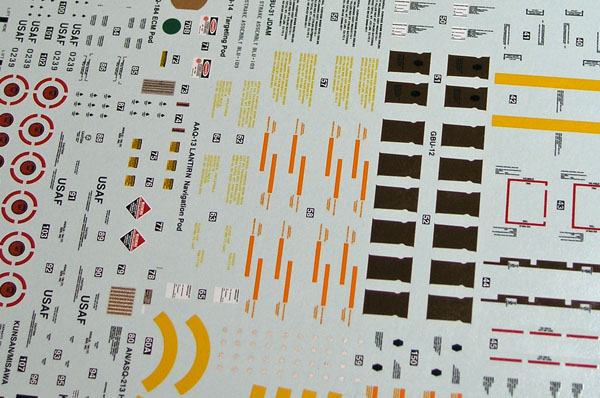
The kit decal sheet is nothing short of stunning – printed in Italy by Cartograf, the quality is unbelievable. Everything is included – all stencil data and enough for six different F-16s, 5 USAF and one for a KF-16C Block 52D Republic of Korea Air Force (RoKAF). A brilliant touch is that every single decal (and there are literally hundreds) is individually numbered, with tiny white numbers on a small black square back plate, so that they’re easy to identify – excellent.
A 28-page instruction book completes the package – that is very clear and easy to understand.